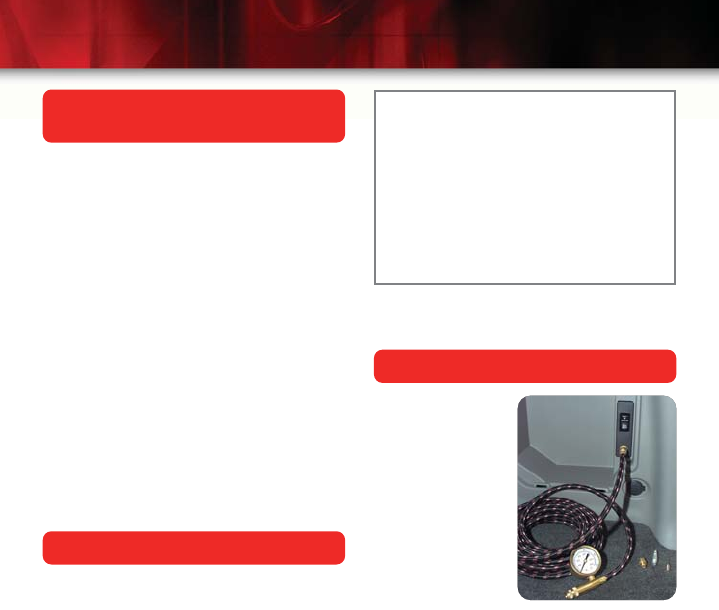
15
Air Inflator System (if equipped)
Your vehicle’s Air
Inflator System
can be used to
inflate such
things as basket-
balls and bicycle
tires, as well as
bring your vehi-
cle’s tires up to
proper air pres-
sure. The inflator
is located behind an access cover in the
passenger’s side rear compartment. The
air inflator kit, which includes a 22-foot
hose and three nozzle adapters, is locat-
ed in the storage compartment. See
your Owner Manual for instructions on
using the Air Inflator System.
See Section 5 of your Owner Manual.
Traction Assist System (TAS)
(if equipped, 2WD Models)
The TAS helps limit wheelspin. It
operates only when it senses that one
or both rear wheels are beginning to
lose traction. When this happens,
engine power is reduced to limit
wheelspin. You may also hear or feel
the system working. TAS is automatical-
ly enabled whenever you start the
vehicle. You can disable it by pressing
the TAS ON/OFF button located near
the shift lever or on the instrument
panel. When disabled, the TRACTION
OFF light comes on. Enable the system
by pressing the TAS ON/OFF button
again and the TRACTION OFF light will
go out.
See Section 4 of your Owner Manual.
Luggage Carrier
The luggage carrier has side rails
attached to the roof and allows you to
carry load on top of your vehicle. Some
vehicles are equipped with sliding cross
rails and tie-down spots to secure cargo.
To slide the cross rails to the desired
position, lift the lever on each side of the
cross rail and slide it into position.
Secure the cross rail by pressing the
levers on each side of the cross rail
down into place. To reduce wind noise
when the luggage carrier is not in use,
position the rear cross rail at the rear-
most position and the front cross rail
above the rearmost portion of the rear
door opening (above the “C”-pillar).
Note: Never carry anything on the vehi-
cle roof that is longer or wider than the
luggage carrier itself. (Examples: ply-
wood, paneling, a mattress, etc.) The
load could be violently torn off, causing
you or other drivers to have a collision.
Note: Loading cargo that weights more
than 220 pounds (100 kg) on the lug-
gage carrier may damage your vehicle.
See Section 2 of your Owner Manual.
Bravada2004 beta5 5/6/03 11:12 PM Page 15


















